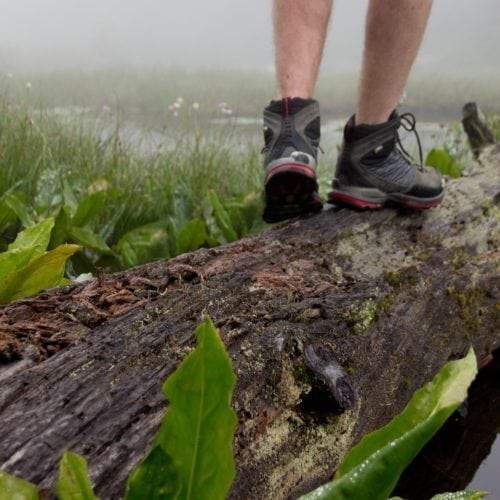Learn how to forage for edible and medicinal plants
We’re incredible lucky to be able to head to a grocery store to buy whatever fruit or vegetable we want, grown all over the world, making it available almost any time of the year. But what if instead we decided to look at our own surroundings and embrace the availability of the season in our local regions?
Sure, you could go to the farmer’s market, or maybe even a local farm, but what if we went one step deeper and just went to the forest?
We are surrounded by an abundance of edible and medicinal plants in the wild, and most of the time we aren’t even aware.
Recently our team headed out on a foraging tour in Stanley Park to learn about the plants that grow so near to our homes that are capable of medicine, and provide delicious nourishment.
Wild and edible plants in Vancouver

Salmonberries
How to identify: Salmonberries resemble raspberries but can come in a variety of colours, including red, orange and yellow. Unlike many other berries, salmonberries don't change colour as they ripen. The leaves grow in three, which can be easily recognized if you bend the top leaf back making the other two leaves resemble the shape of a butterfly.
How to use: Salmonberries can be eaten fresh and abundantly. They're delicious. You can also steep their leaves (fresh or dried) for tea. The leaves are particularly great for women's health, similarly to raspberry leaves which are commonly used as a uterine tonic.
How to harvest: Salmonberries can be picked directly from the vine. They should release easily when ready for harvest.

Huckleberries
How to identify: Huckleberries are small red berries grown on thin branches about 2-3 meters in height. The variety we found was dark red in colour when ripe. To identify a huckleberry, look for the small white circular indentation on the bottom of the berry.
How to use: Huckleberries are a rich source of vitamin A and vitamin C, as well as being sweet and delicious to eat.
How to harvest: Picking huckleberries can be time consuming since they’re such a small berry. As a tip, use a wide tooth comb to gently comb the branches to harvest the berries into a bucket.

Elderberries
How to identify: Elderberries are small berries that grow in clusters on thin branches. It's one of the plants commonly used for medicine in the natural health industry. You can find elderberries in capsules, syrups, elixirs and tinctures.
How to use: Elderberries are best eaten cooked. Their seeds, leaves and vines should not be ingested by humans, so make sure to remove them from the berry itself. The berries can be cooked into a syrup or turned into a tincture to help support immunity.
How to harvest: Elderberries can be picked directly from the vine

Dandelions
How to identify: You probably would have no issue identifying dandelions. They’re the pesky weeds so many people hate to see growing in the front lawn and gardens of their homes. Short stem or long stem they have bright yellow flowers and often grow abundantly together.
How to use: Every part of the dandelion can be used. The flowers and roots can be steeped for tea to help with indigestion. The leaves can be eaten as salad. And the stem, containing a milky fluid can be used for application to warts.
How to harvest: Pick your dandelions at the base of the stem, or dig up the root if you wish to use it. Make sure to harvest your dandelions from clean spaces, avoiding busy road sides and heavily used parks and community spaces.

Hemlock Tree
How to identify: The hemlock is a part of the pine tree family. It's tall with many small cones throughout its branches. It's most recognizable feature however is its drooped top.
How to use:In the late spring to summer, the bright green hemlock tips amongst its branches are an edible treat. They have a light and lemony flavour and are rich in vitamin C. They're great to snack on fresh, or throw into a salad.
How to Harvest:Pick as many as you can when you find them, because they're only that tasty and bright green stage one time per year. Vacuum seal all the tips and freeze them to use as you wish.

Douglas Fir
How to identify: Douglas Firs are tall trees of the pine family. They have medium sized cones that by legend acted as a shelter for mice. The legend helps to describe the look of the cone that appears to have tiny mouse tails throughout it.
How to use: The cones of the douglas fir releases a clear tacky sap that is traditionally used to aid wounds. It fills the wound to prevent infection with its anti-microbial properties. To remove the sap from your skin, an oil base is needed.
How to harvest: Bend the bows of the tree and using a butter knife gently scrap the sap into a jar to use when needed.
Searching for edible and medicinal plants where you live can be a lot of fun. Make sure however that you're positive the plant you've identified is correct before ingesting it. If you're ever unsure, avoid harvesting from the plant or consult an expert. Local touring groups may offer foraging tours in your region where they can help to teach you from experience what is safe.









